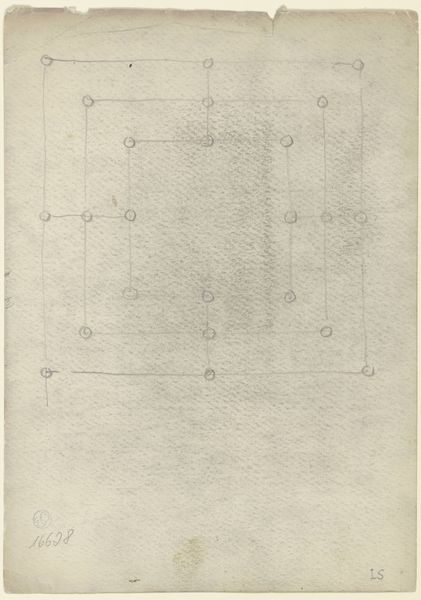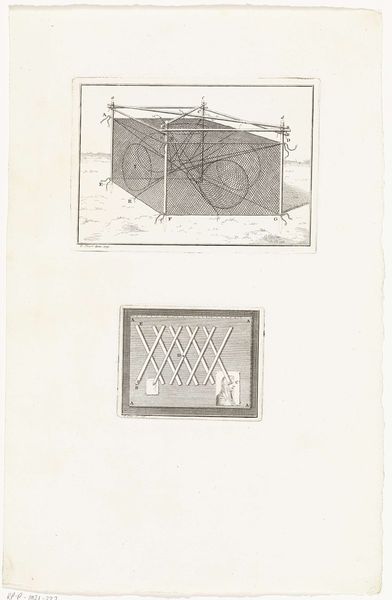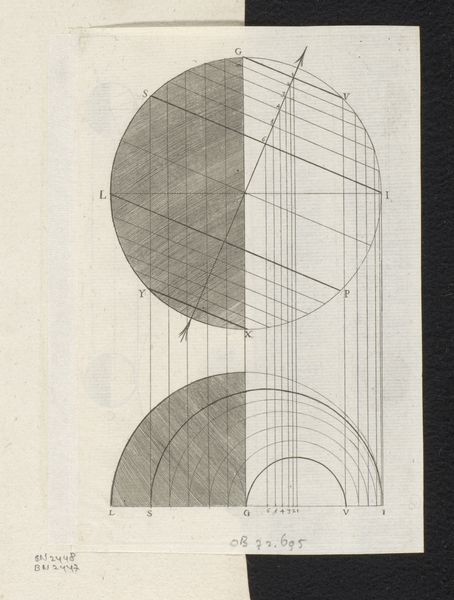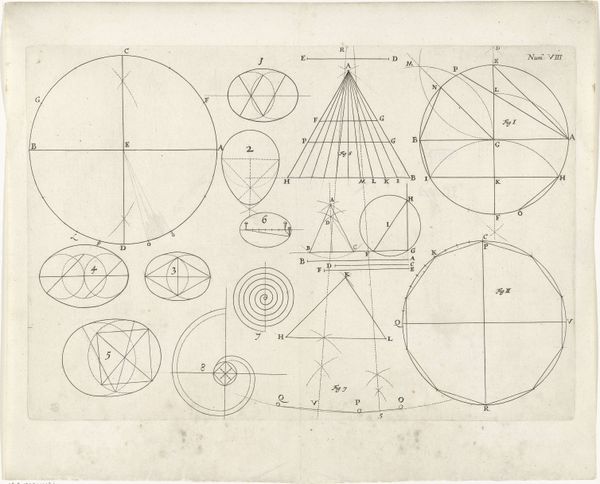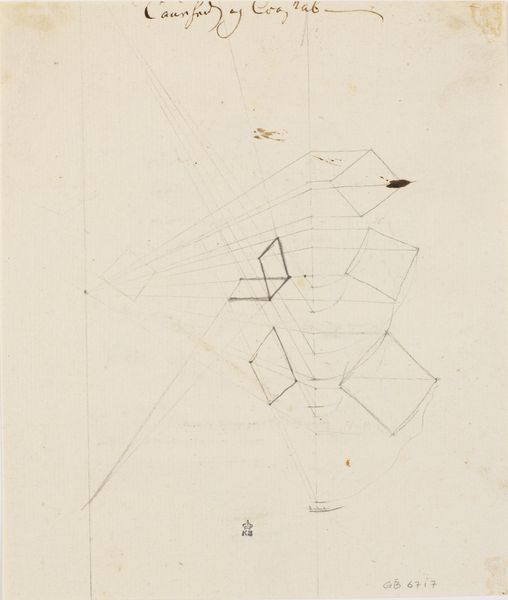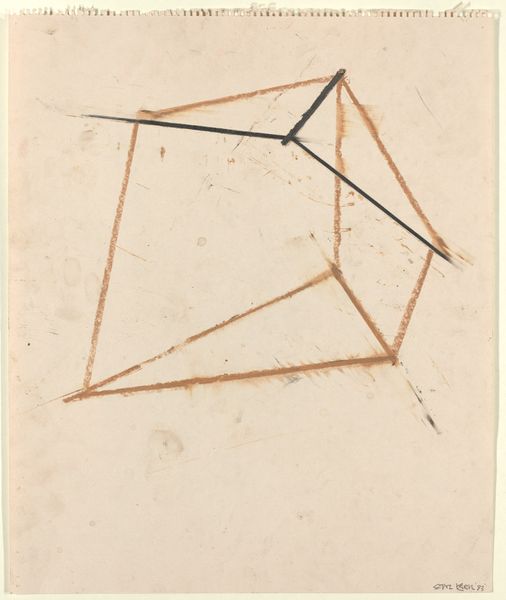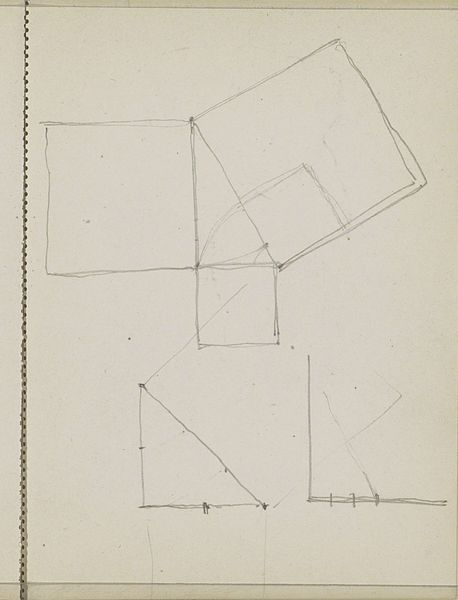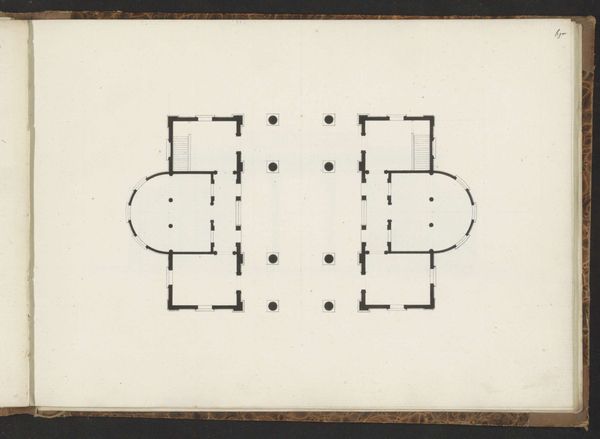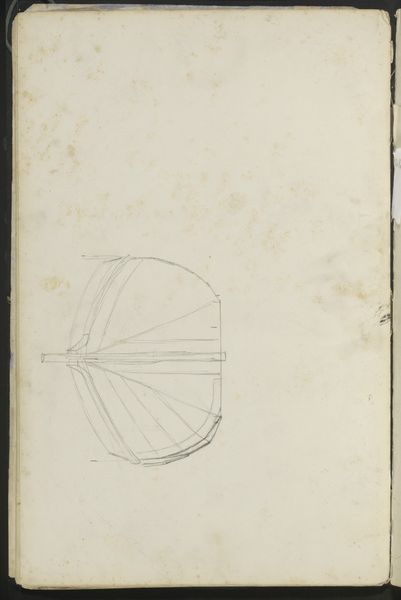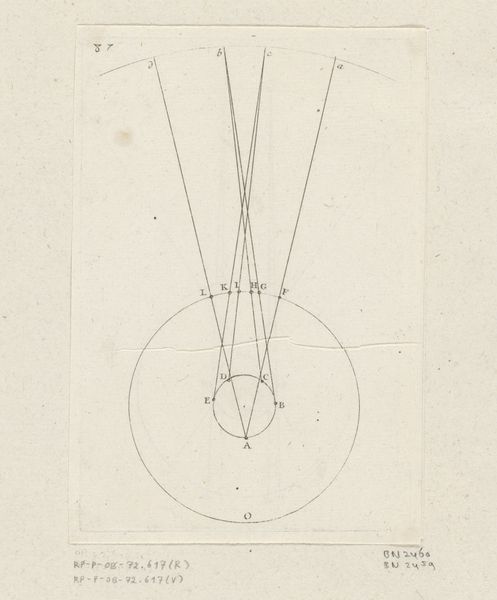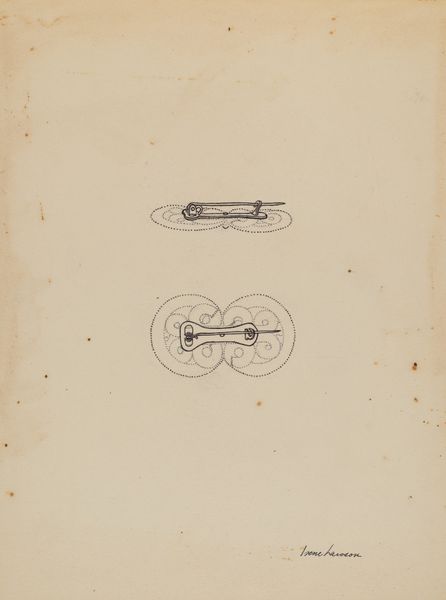
drawing, paper, ink
#
drawing
#
neoclassicism
#
paper
#
form
#
ink
#
geometric
#
abstraction
#
line
#
academic-art
Dimensions: height 470 mm, width 360 mm
Copyright: Rijks Museum: Open Domain
Siméon Joseph Petit made this work, "Geometrische figuren," using graphite, during a time when Europe was on the cusp of significant social and political change. Petit's arrangement of geometric forms is not just an exercise in precision; it reflects the Enlightenment's emphasis on reason and order, and perhaps even hints at the complex societal structures of the era. The intersecting lines and shapes might evoke the hierarchies and power dynamics inherent in 18th-century society, from the rigid class system to the era's notions of ideal governance. As we observe how each shape interacts with another, consider how these figures might echo the personal and emotional experiences of individuals navigating a world increasingly shaped by scientific and philosophical discourse. Does Petit's work challenge or reinforce the traditional representations of his time? The pursuit of knowledge through geometry becomes a mirror reflecting society’s quest for clarity and control, as well as hinting at the underlying tensions between order and the unpredictable realities of human experience.
Comments
No comments
Be the first to comment and join the conversation on the ultimate creative platform.
